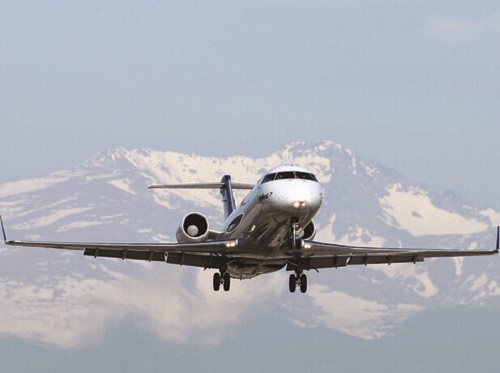The Colorado Department of Transportation’s Division of Aeronautics wants to get its 76 public use airports ready for alternatively powered aircraft and the fuels they use.
[Above photo by the Colorado DOT]
The agency is partnering with the U.S. Department of Energy’s National Renewable Energy Laboratory or NREL to study which alternative fuel aircraft could use its airports and what changes would have to be made to accommodate the planes and their fuels. The Colorado Aeronautical Board is putting up $400,000 to support the NREL study, which will take about 18 months to complete.
Preparing the airports for alternative fuel aircraft “will make air transportation in Colorado more efficient, more equitable and accessible, with reduced environmental impacts,” Colorado Aeronautics Division Director David Ulane said in a statement.
U.S. air travel contributes about 2.7 percent of the country’s carbon dioxide emissions, according to the Federal Aviation Administration’s 2021 Aviation Climate Action Plan, which seeks to put the industry on a path toward net-zero emissions by 2050.
A recent report from global consultant McKinsey estimates that aircraft using hydrogen or electric power could comprise up to 38 percent of the global aircraft fleet by 2050. The report says airports will have to make significant financial and land investments to meet the fuel generation and storage demands of alternative fueled aircraft.
A major international airport such as Denver International Airport, which is one of the busiest in the world, could expect to invest about $3.9 billion in infrastructure to shift toward alternative propulsion by 2050, the report concluded.
Assessing those infrastructure needs is one of the goals of the Colorado study. Other objectives include:
- Identifying new alternatively powered aircraft that could utilize Colorado’s airports.
- Identifying at which airports battery-electric general aviation aircraft could be deployed.
- Identifying government policy and regulatory considerations, financial impacts, and potential incentives to encourage and support new aviation technology.
- Exploring opportunities to make travel faster and more efficient while broadening access to air travel and reducing environmental impacts.
“Colorado’s Division of Aeronautics is undertaking a first-of-its-kind statewide evaluation of next-generation aircraft, aviation fuels, and implications on necessary infrastructure,” NREL Strategic Partnerships Manager Brett Oakleaf added. “This leadership is critical for preparing and de-risking the aviation transition for Colorado and its airports.”
State departments of transportation play a critical role in the aviation sector, especially when it comes to airport infrastructure needs.
For example, several state DOT studies – including ones from Iowa, Illinois, Georgia, Wyoming, and Alaska – show that airports function as significant “economic engines” as well as key mobility hubs for many states.
The American Association of State Highway and Transportation Officials also recently published a new report analyzing the impact of general aviation on state and local economies across the country.
That report – officially entitled “The Impact of General Aviation on State and Local Economies: State Reports 2023” – is a joint effort between AASHTO, the Alliance for Aviation Across America, and the National Association of State Aviation Officials.
AASHTO said this report is envisioned as a communication resource to help illustrate the important role general aviation serves in state and local communities, as well as within the nation’s economy.
